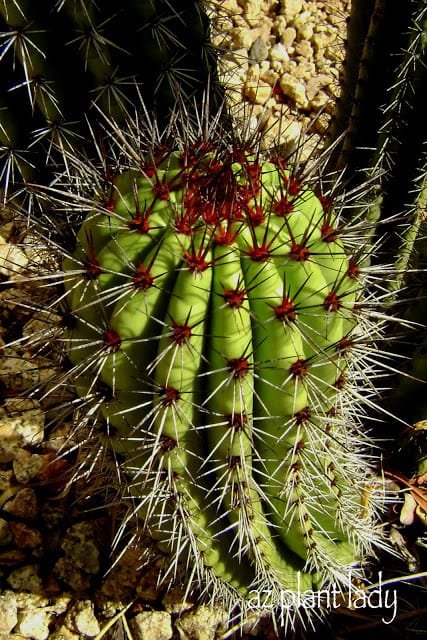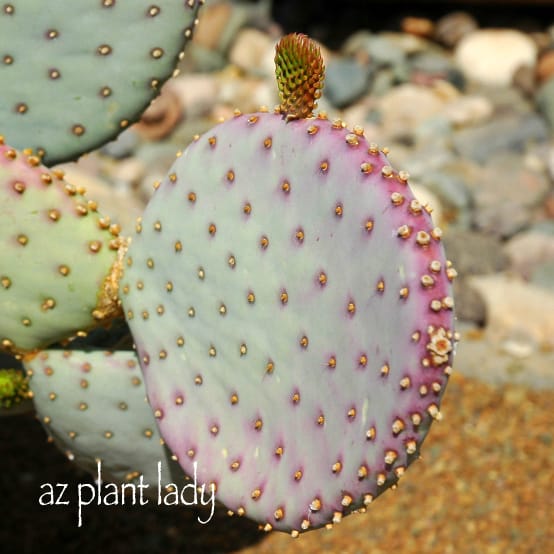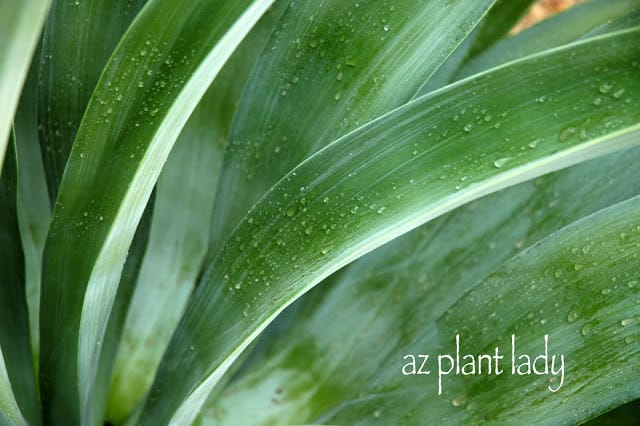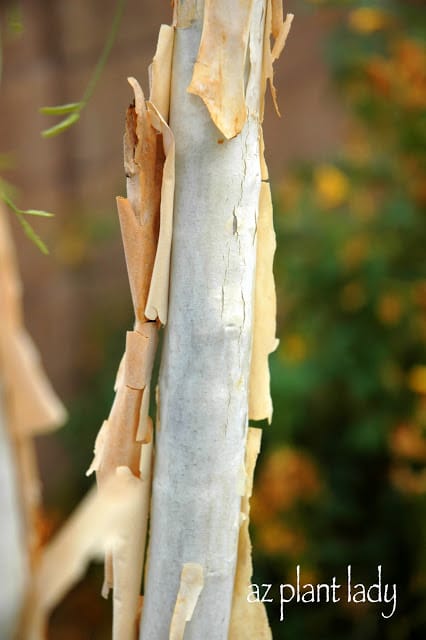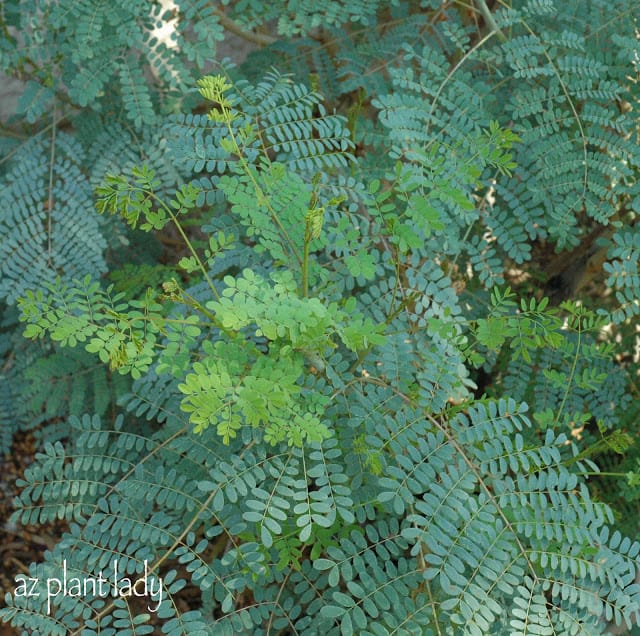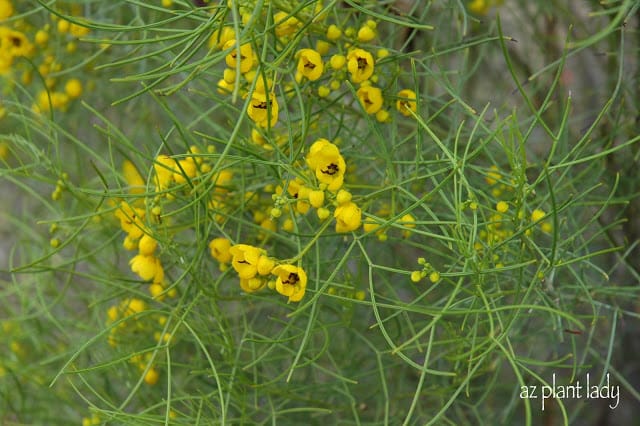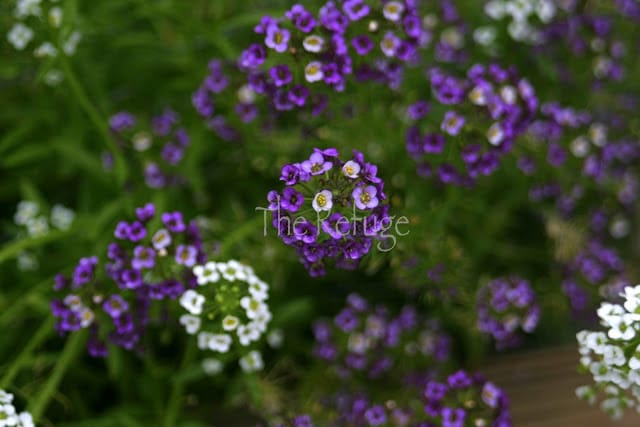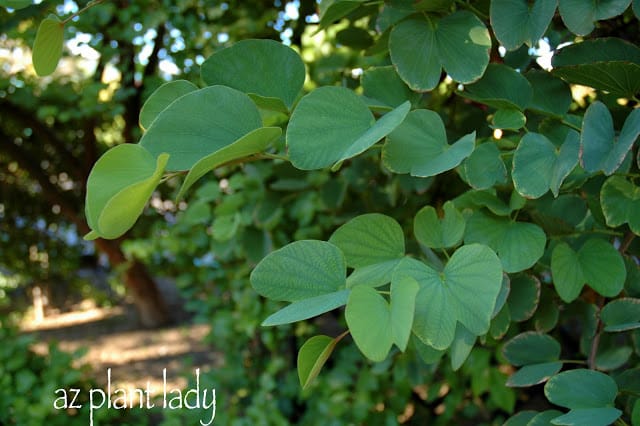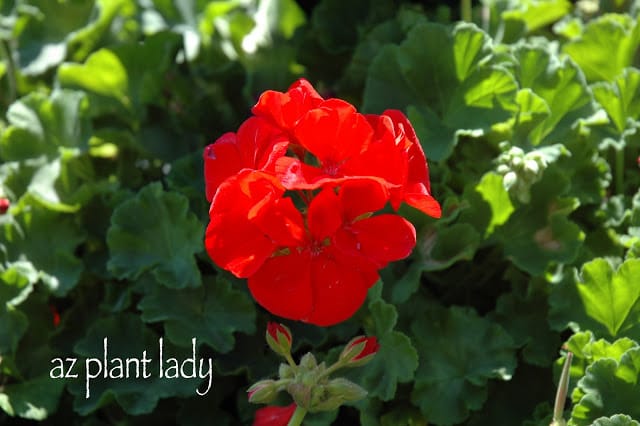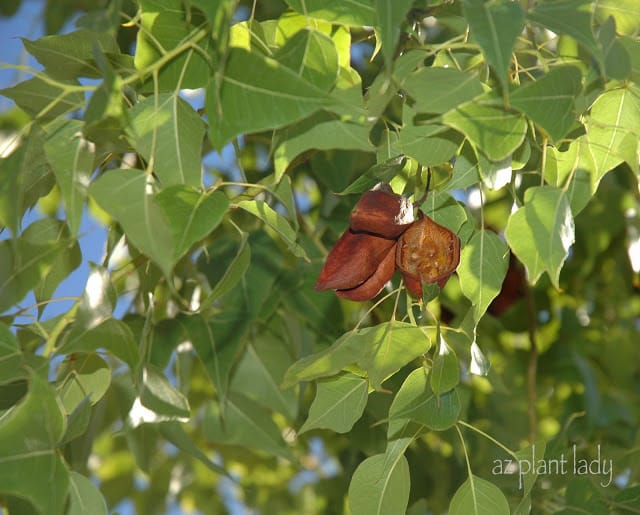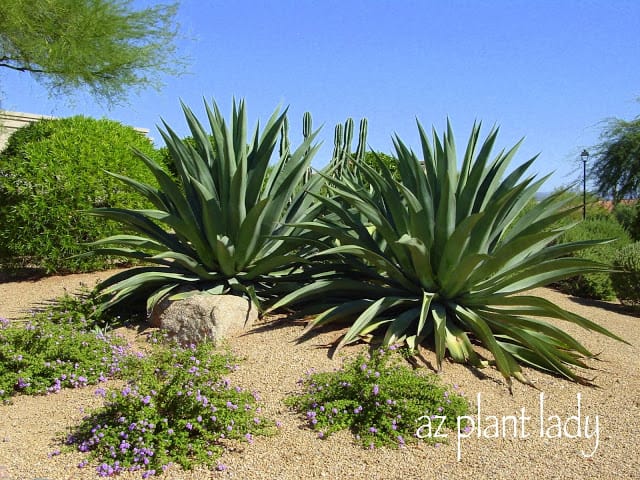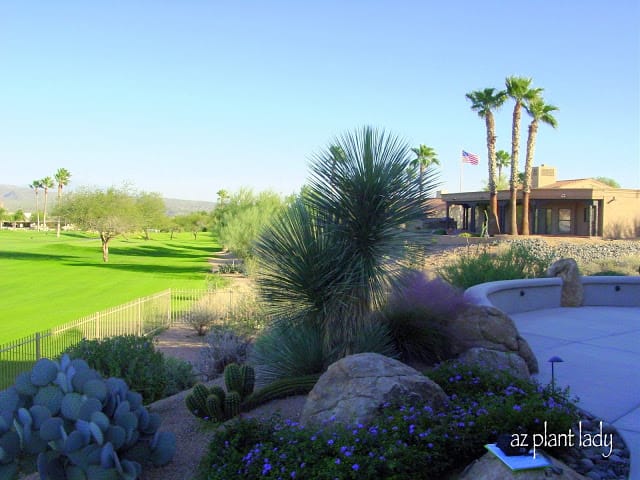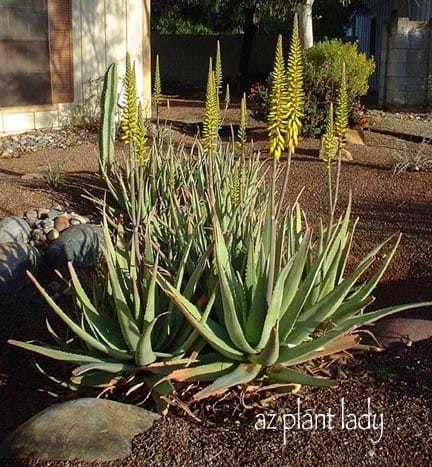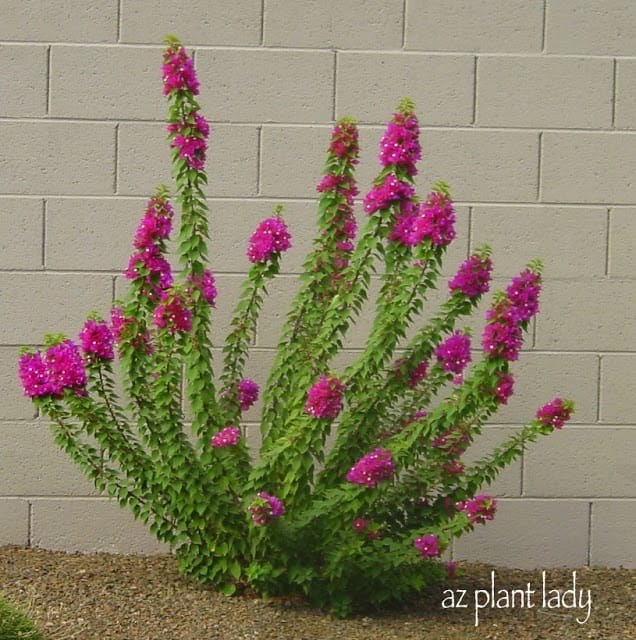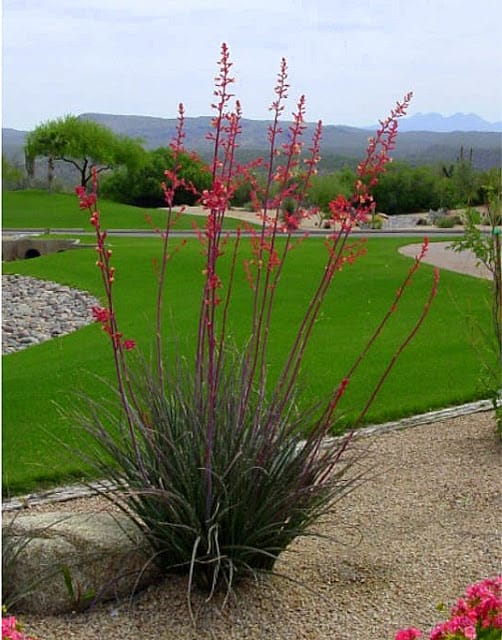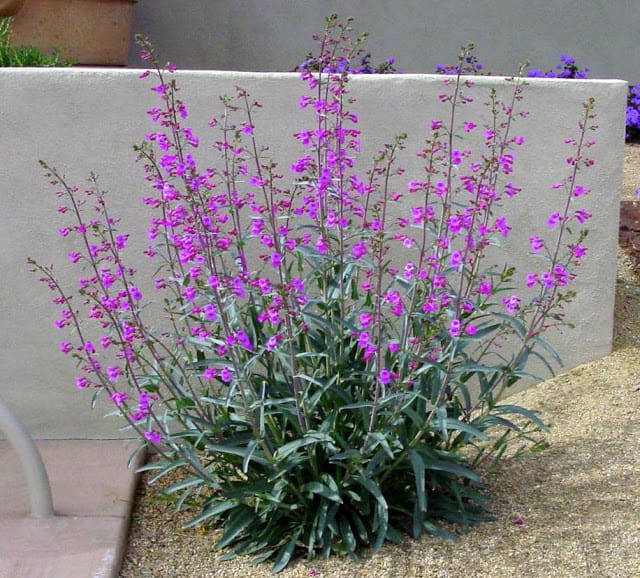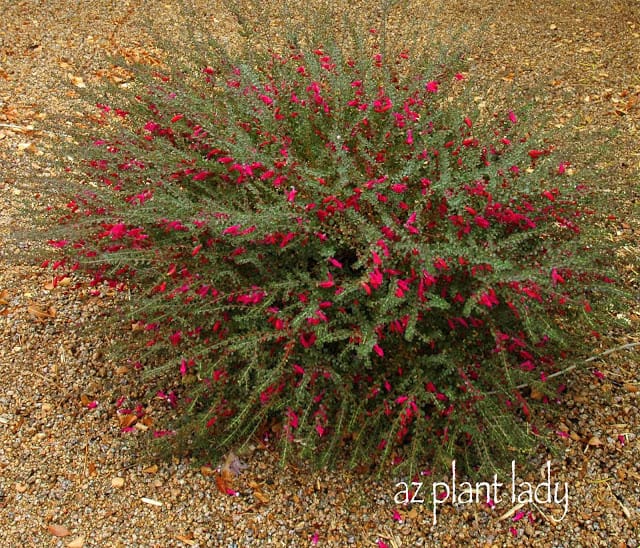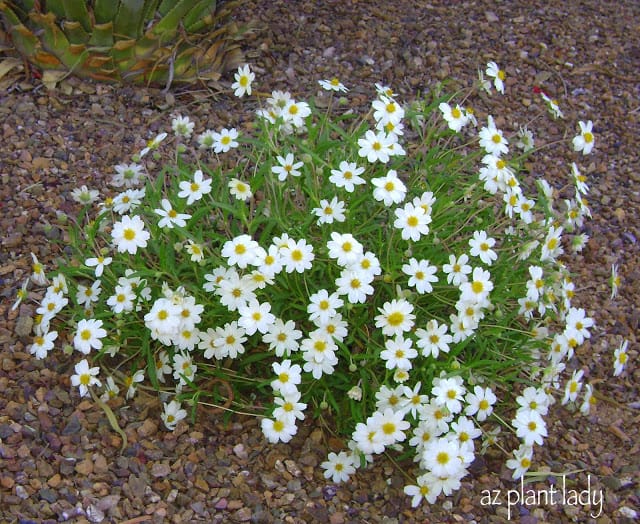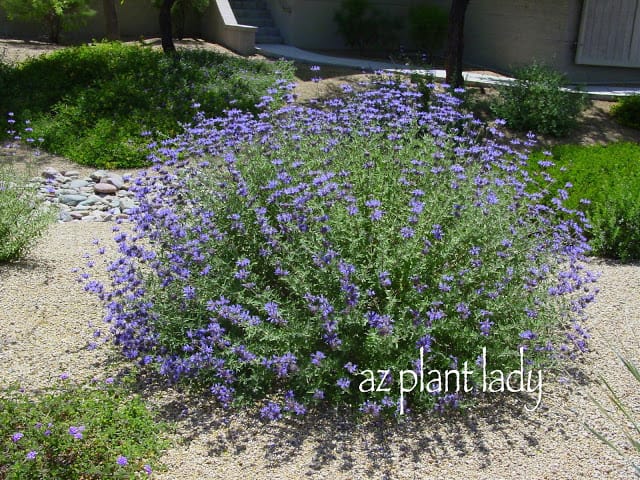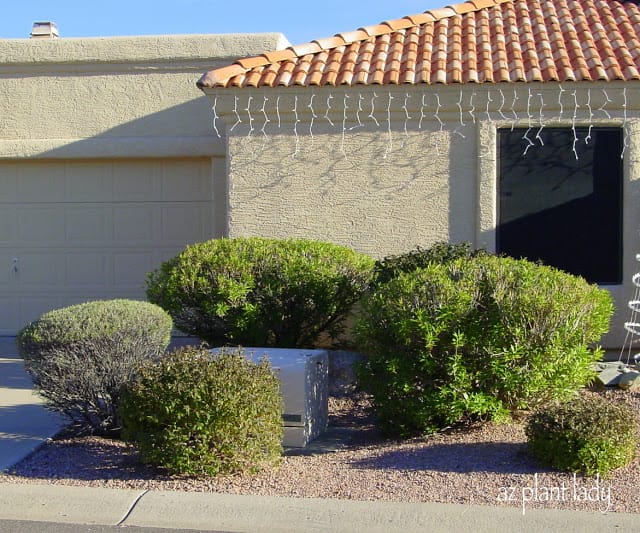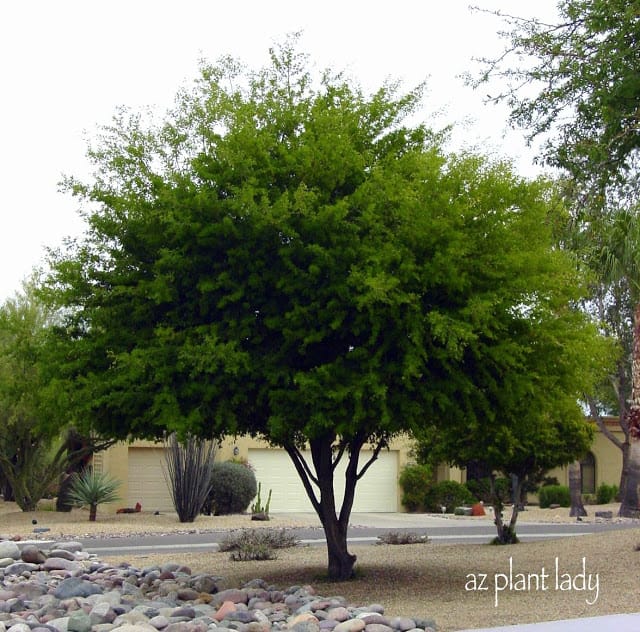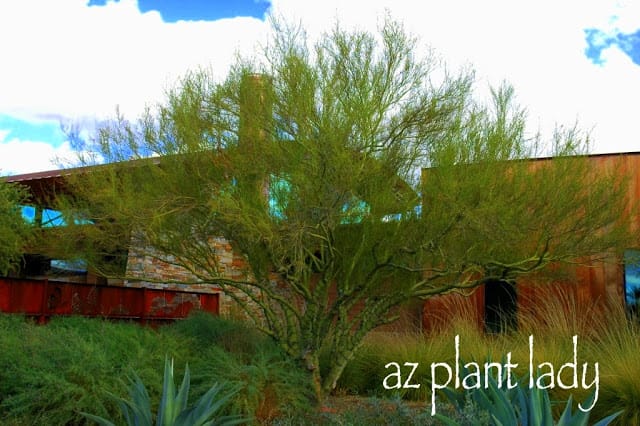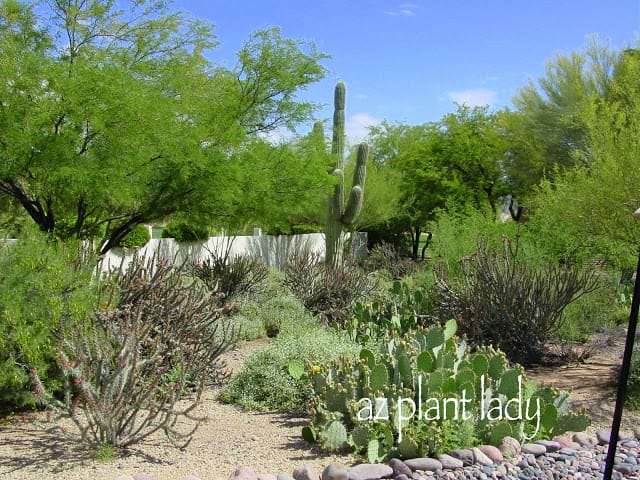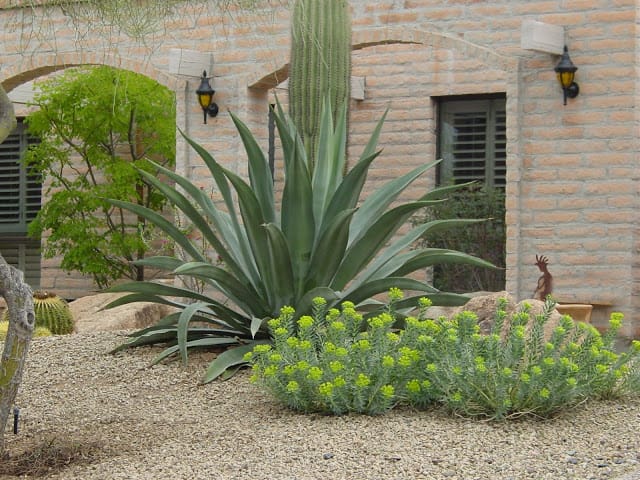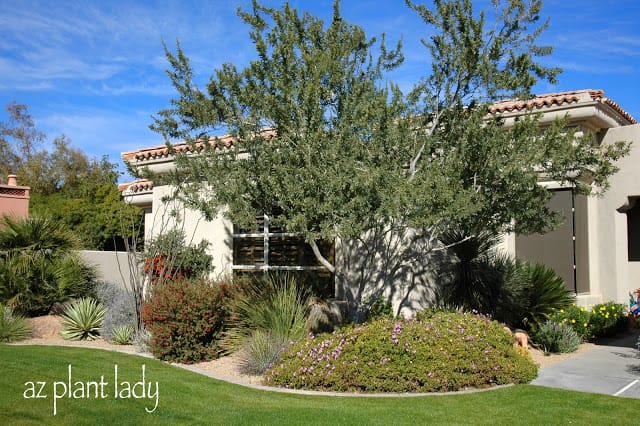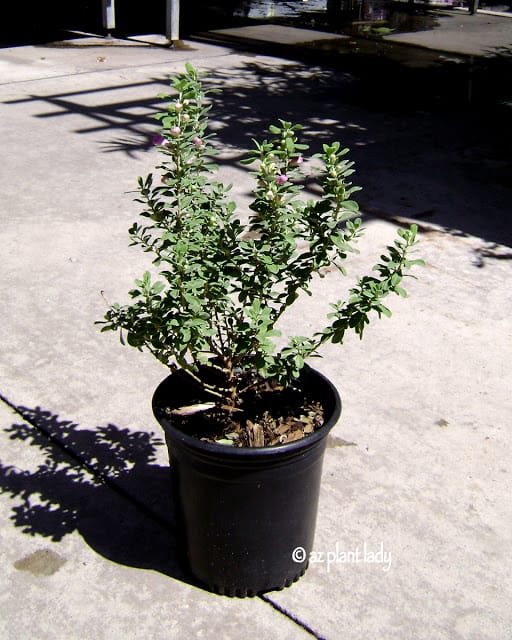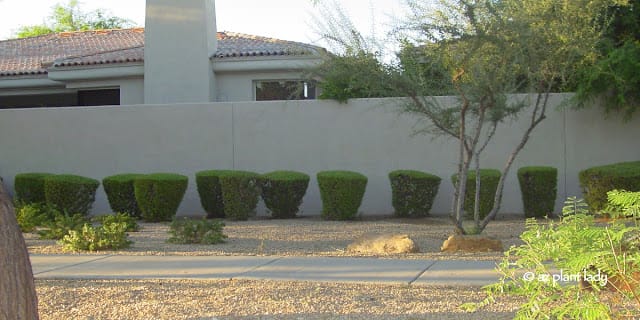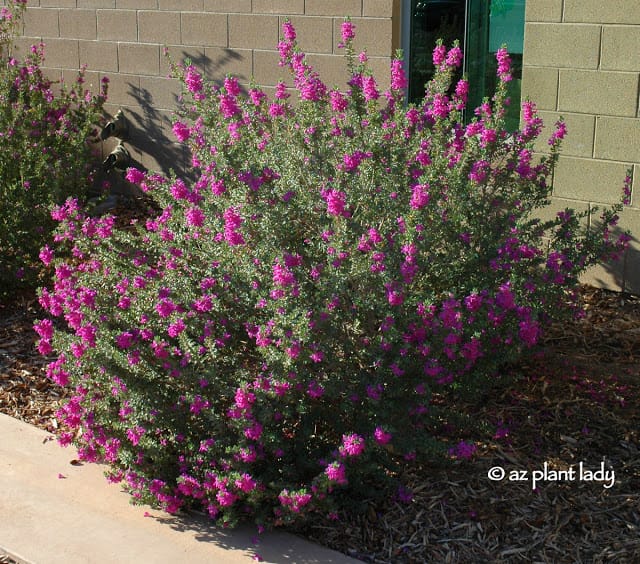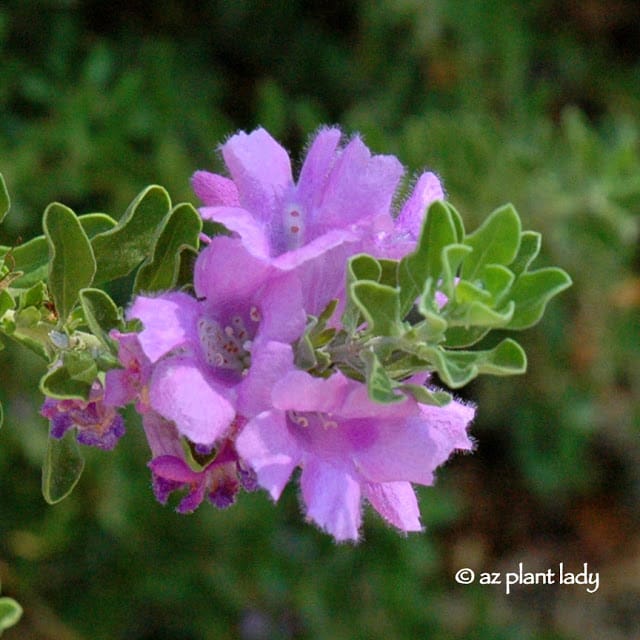My inbox has been filled lately with pruning questions. Specifically, how to prune back overgrown flowering shrubs.
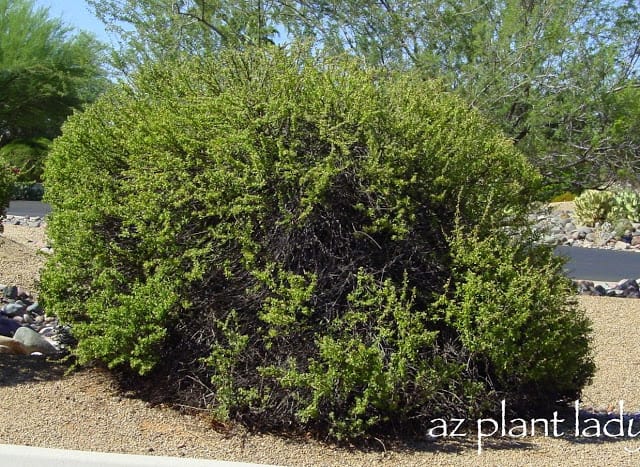
Chihuahuan Sage (Leucophyllum laevigatum)
You may be wondering why you need to severely prune back overgrown shrubs?
Well, as you can see from the photo, above – as a shrub’s branches age, they produce fewer leaves and flowers. As time passes – these branches die, which leave ugly, bare areas.
Here are a few more examples of overgrown shrubs that need to be severely pruned back…
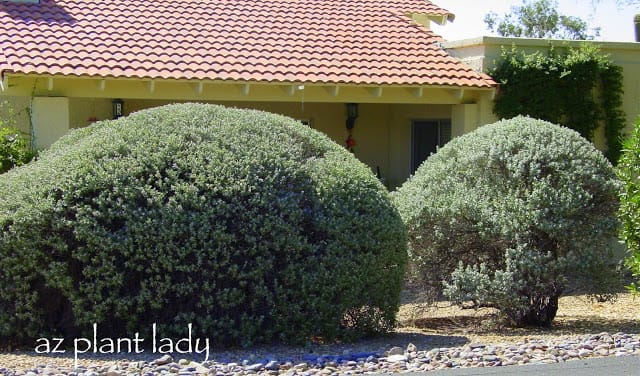
‘White Cloud’ Texas Sage (Leucophyllum frutescens ‘White Cloud’)
You may think the formally pruned sage shrubs in the photo above, look okay besides being a bit on the large side.
But, what you don’t see is a large amount of dead branches inside. In reality, these shrubs are covered in a very thin layer of growth.
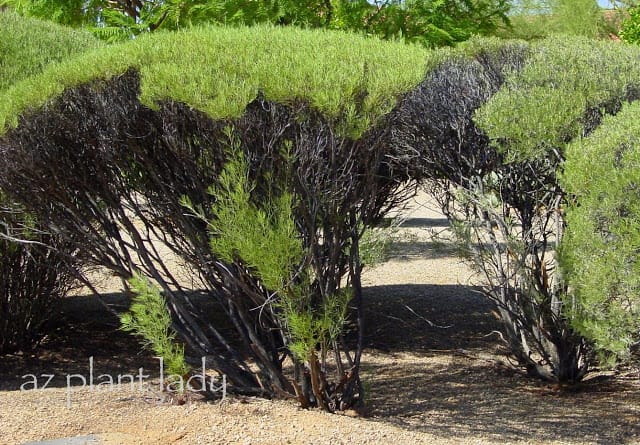
Here is an example of old Cassia (Senna nemophila) shrubs that have only been pruned formally. You can see that there are more dead areas than live growth.
So, how do you go about severely pruning old, overgrown shrubs back?
First of all – don’t do this during cooler months because it will take your shrubs a very long time to grow back. In addition, it can make frost-tender shrubs more susceptible to frost damage. Wait until spring for pruning back summer-flowering shrubs such as bougainvillea, sage, oleanders, etc.
You need a good pair of loppers and sometimes a pruning saw and you are ready to go. Simply prune your shrub back until there is only about 1 – 2 ft left.
Hedge trimmers can help if you use them to remove the outer part of the shrub and then you can get your loppers inside to prune off larger branches toward the base.
Below, are photos of ‘Rio Bravo’ Sage (Leucophyllum langmaniae ‘Rio Bravo’) shrubs that started out overgrown, were pruned back severely, and grew back.
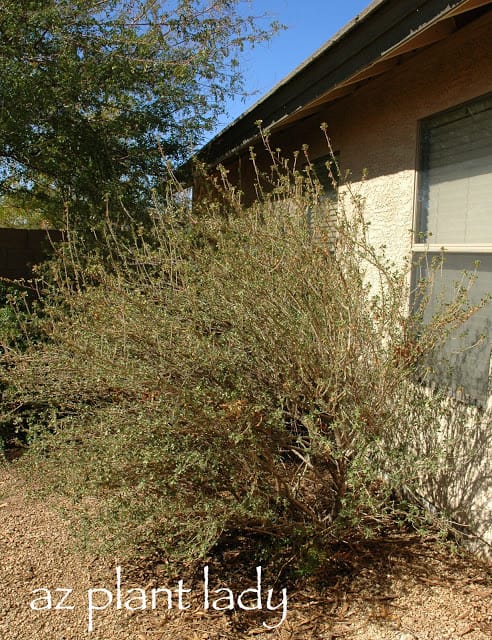
Overgrown shrubs.

Pruned back to 1 ft.
This is the ugly stage. But you need to go through this ‘awkward’ stage to achieve beautiful, healthy shrubs.
I promise that it doesn’t last long…

New growth appears 3 weeks later
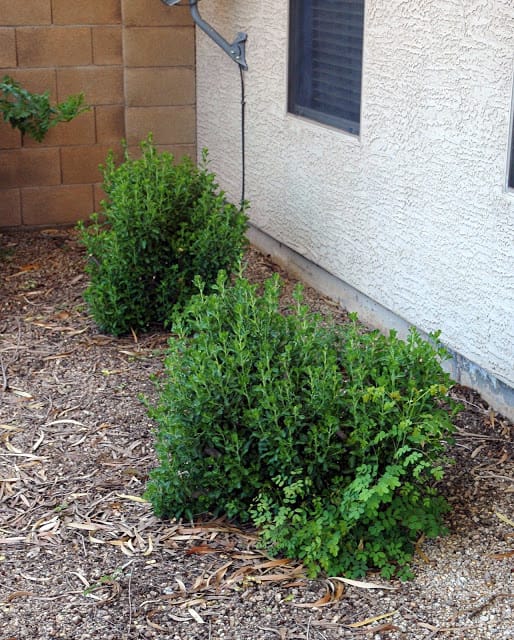
8 weeks after pruning.

12 weeks after severe pruning.
You can see that the severe pruning caused the shrub to grow young, new branches that produce beautiful green growth and flowers.

**Although severe renewal pruning keeps your shrubs healthy and attractive – there are a few cases when an old, overgrown shrub won’t grow back. It is doubtful that the Cassia shrubs, above, will survive for long either with or without severe pruning).
This usually indicates that the shrub has declined too much and would not have survived for long even without pruning. If this happens, you are better off replacing your shrub.**
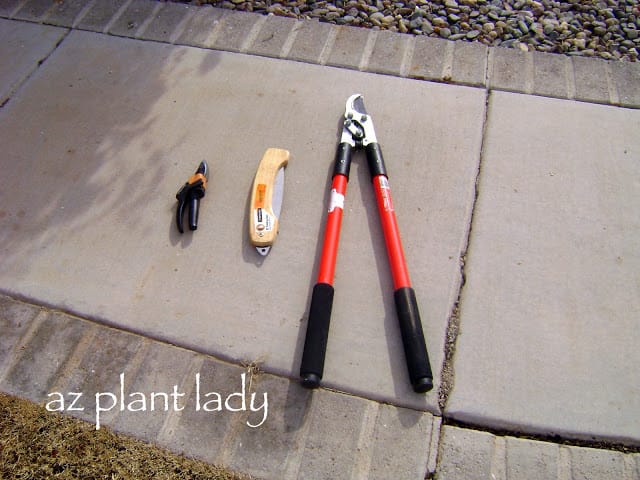
Hand pruners, pruning saw and loppers
A good guideline for severely pruning your shrubs is to do this every 3 years or so. Of course, you can do this every year if you like to help keep your shrubs from outgrowing their space.
I hope that this helps to answer some of your questions.
If you would like to learn more about how to prune shrubs the right way, I invite you to learn more about my popular online shrub pruning workshop.


